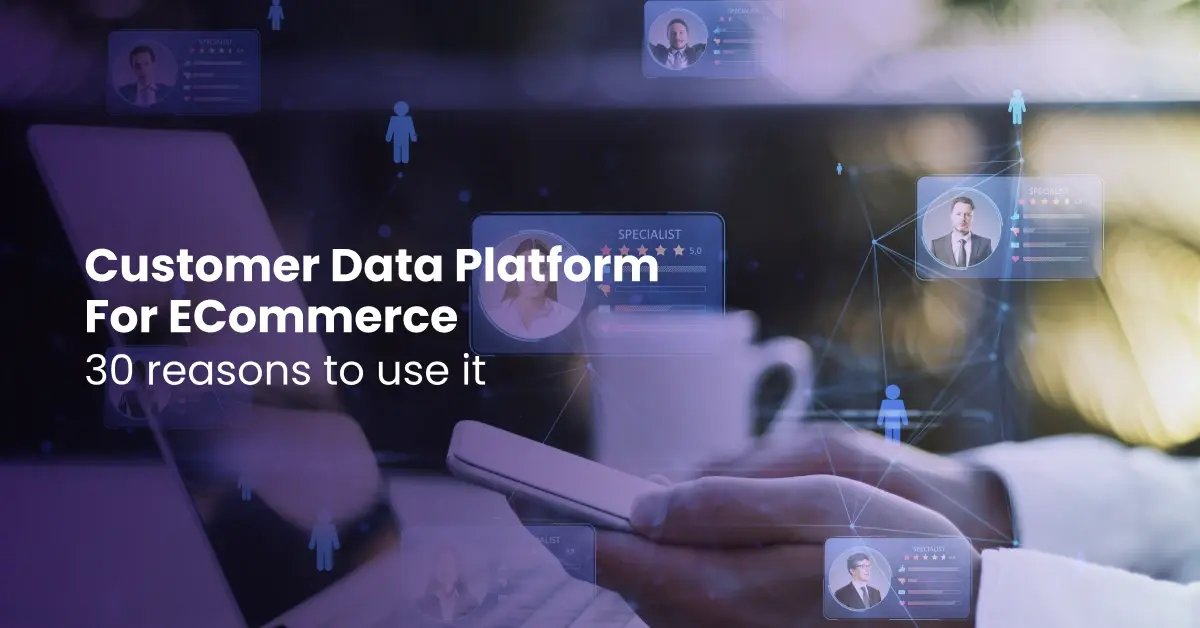Information is king, and businesses are constantly on the lookout for tools that can provide a richer understanding of their customers and the journey they embark upon. Customer Data Platforms (CDP) have emerged as crucial tools, particularly for the burgeoning realm of eCommerce.
30 Reasons To Use A CDP
Here’s a deep dive into why CDPs should be at the heart of your digital strategy:
1. Seamless Automation
Trust in a CDP to transform complex data streams into easily digestible and actionable insights, automating processes that would otherwise drain resources.
2. Eliminating Operational Silos
Facilitate efficient information-sharing across departments with a CDP, creating a unified vision for your business.
3. Enriching the Customer Journey
Harness CDPs to unlock a comprehensive understanding of your customer’s interactions, ensuring you’re always delivering value.
4. Intelligent Marketing Segmentation
Harness the power of AI to sift through varied data, empowering you to create precisely targeted marketing campaigns.
5. Tailored Communication
Today’s consumer demands personalization. With a CDP, ensure every touchpoint resonates and builds loyalty.
6. Crafting Memorable Experiences
Use data-driven insights to craft seamless experiences, both online and offline, enhancing customer satisfaction.
7. Metrics that Matter
Deploy CDPs to get an eagle’s eye view on the efficacy of your eCommerce strategies, refining them as you grow.
8. Real-time Relevance
In an ever-changing market landscape, CDPs ensure you’re always a step ahead, thanks to real-time data updates.
9. 360-Degree Customer View
Break down the barriers between online and offline data to truly understand your customer’s journey.
10. Unified Customer Profiles
Leverage a CDP to get an in-depth understanding of your audience personas, refining your marketing strategies.
11. Stand Out from the Crowd
Responsive data-driven strategies ensure you’re always ahead of the curve, a must in today’s competitive marketplace.
12. Maximizing Customer Lifetime Value
Invest in understanding your current customers’ needs and behaviors, ensuring they remain loyal advocates.
13. Merging Digital and Physical
Achieve true omnichannel success by merging online and offline data streams.
14. Refining Offerings
Listen to your customers. Let their feedback guide improvements in your products and services.
15. Attracting Ready Buyers
Precision-target your messaging to capture those on the cusp of purchase.
16. Deep Customer Engagement
Leverage CDP insights to truly engage customers across every touchpoint, building loyalty and trust.
17. Enhancing Marketing Tools
Amplify the efficiency of your current marketing tools by integrating them with a powerful CDP.
18. Spotting and Addressing Anomalies
Ensure your strategy is always on track by identifying and rectifying any anomalies.
19. Anticipating Customer Behavior
Predict future customer actions and behaviors, refining your strategies for maximum impact.
20. Optimized Operational Efficiency
Drive efficiency by streamlining data processes, freeing up resources for strategic action.
21. Strategic Pricing
Ensure your pricing remains competitive and appealing by gauging customer sentiment and market trends.
22. Effective Supplier Negotiations
Utilize historical data to drive better deals and collaborations with suppliers.
23. Never Miss Feedback
Continuous monitoring ensures you’re always in the loop, adjusting strategies based on real-time feedback.
24. Minimize Cart Abandonment
Dive deep into the reasons behind cart abandonment, ensuring your checkout process is as smooth as possible.
25. Addressing Checkout Drop-offs
Investigate and rectify factors causing customers to abandon checkouts, maximizing conversions.
26. Tackling Churn Rates
Unearth the reasons behind dwindling customer loyalty and rectify them, building a lasting relationship.
27. Boosting Conversion Rates
Harness data insights to optimize your site’s usability and messaging, driving higher conversions.
28. Driving Organic Traffic
Strategically leverage live content and social media to naturally increase site visitors.
29. Elevating Social Media Engagement
Deepen customer relationships by engaging them on social platforms, turning followers into loyal customers.
30. Embrace the Future
Data is the future of marketing and sales. Integrate a CDP into your strategy and ensure your brand remains at the forefront.
For a comprehensive understanding of the transformative power of CDPs, delve into Arena’s ebook Diving Into The Customer Journey In Live Ecommerce. The insights within can be the key to unlocking the full potential of your eCommerce strategy.




